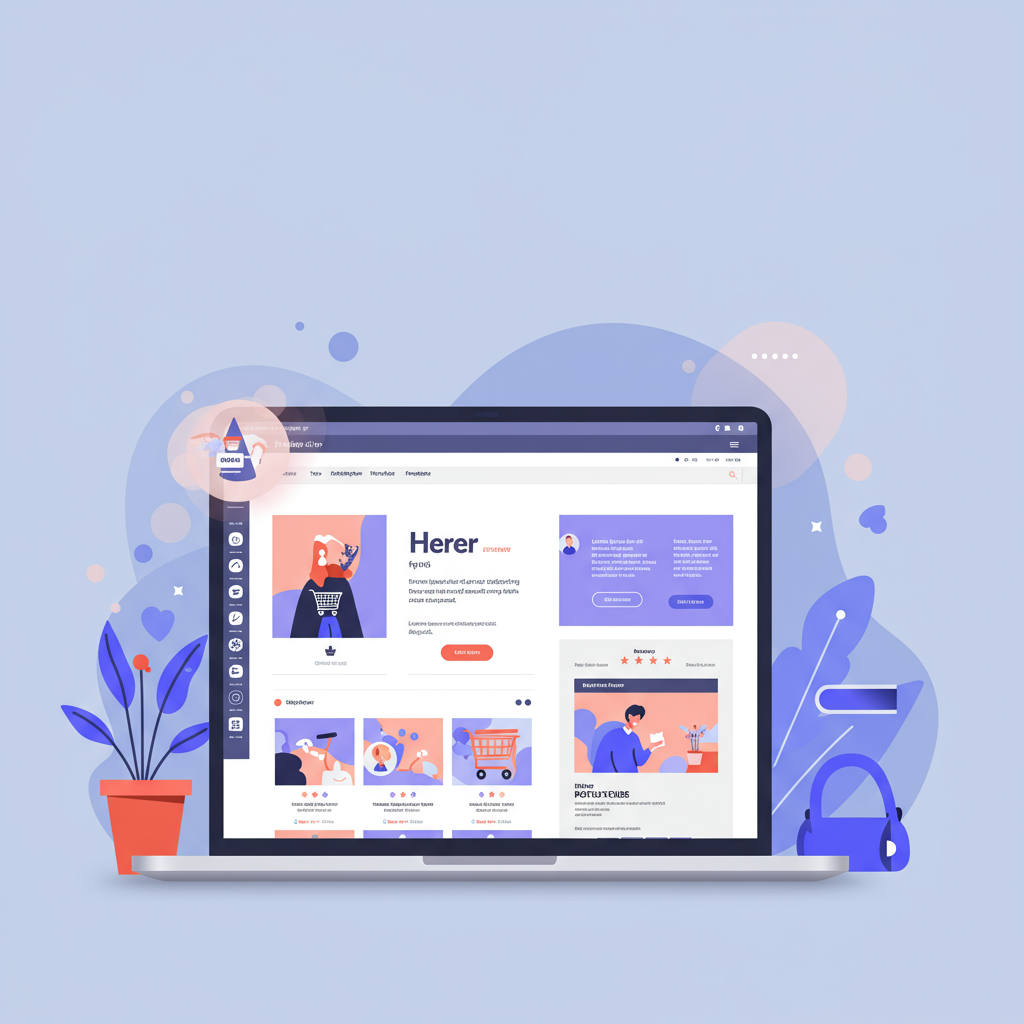Unlock higher conversions and deeper customer engagement with a future-proof homepage strategy.
As a Shopify merchant, you know your online store’s homepage is more than just a digital storefront; it’s your brand’s first impression, your virtual handshake with potential customers.
In the rapidly evolving e-commerce landscape, staying ahead means constantly refining your approach, especially as we look towards 2025.
The design choices you make today for your Shopify homepage will significantly impact your conversion rates, customer engagement, and ultimately, your bottom line tomorrow.
I’ve spent countless hours analyzing trends and best practices, and I’m excited to share my insights on how to craft a compelling, high-converting homepage for the year 2025.
This isn’t just about aesthetics; it’s about creating an intuitive, engaging, and personalized experience that resonates with your target audience.
One of the most significant shifts we’ll see is the deeper integration of AI to personalize the homepage experience for each visitor.
Imagine a homepage that dynamically adjusts product recommendations, banners, and even messaging based on a user’s browsing history, location, or purchase patterns.
This level of tailored content moves beyond simple ‘customers also bought’ suggestions to a truly unique journey for every individual.
Static images are becoming less impactful. 2025 will demand more dynamic and immersive content.
Think about incorporating 3D models of your products, augmented reality (AR) try-on features, or high-quality video backgrounds and product demonstrations directly on your homepage.
These elements don’t just look good; they significantly enhance product understanding and reduce purchase hesitation.
Consumers are increasingly conscious of a brand’s values. Your homepage should subtly, yet effectively, communicate your commitment to sustainability, ethical practices, or social responsibility.
This could be through a dedicated section, trust badges, or even integrated stories about your supply chain. Authenticity is key here.
While this isn’t new, its importance will only intensify. Your homepage *must* be flawlessly responsive and optimized for mobile devices.
A significant portion of your traffic will come from smartphones, and a clunky mobile experience is a guaranteed bounce. Prioritize speed and ease of navigation on smaller screens.
User patience is at an all-time low. A slow-loading homepage is a conversion killer.
Invest in optimizing your images, leveraging lazy loading, and choosing a lightweight Shopify theme. Google’s Core Web Vitals will continue to be crucial for SEO and user experience.
The hero section is your prime real estate. It needs to immediately convey your brand’s value proposition and capture attention.
Use a compelling image or video, a clear headline, and a strong call-to-action (CTA) that guides visitors to your most important products or collections.
An intuitive menu is non-negotiable. Make it easy for visitors to find what they’re looking for, whether it’s product categories, ‘About Us,’ or customer support. Consider sticky navigation for improved user experience as they scroll.
Showcase your best-sellers, new arrivals, or seasonal collections prominently. Use high-quality product photography and concise descriptions.
Build trust by displaying customer reviews, testimonials, user-generated content (UGC), or media mentions. People trust what others say more than what you say about yourself.
Don’t just tell; guide. Every section of your homepage should have a purpose and a clear CTA, whether it’s ‘Shop Now,’ ‘Learn More,’ or ‘Sign Up.’
If you have a blog, feature your latest articles. This not only provides valuable content but also helps with SEO and positions your brand as an authority.
Make it easy for customers to find support (FAQ, contact us) and reassure them with trust badges (secure checkout, money-back guarantee).
Design your homepage with accessibility in mind. This means proper color contrast, clear font choices, and keyboard navigation support. An accessible site is a site for everyone.
While the homepage isn’t always the primary SEO target, ensure it has relevant keywords in its title, meta description, and headings. Optimize images with alt text.
Don’t guess; test. Continuously A/B test different elements of your homepage – headlines, CTAs, image choices – to see what resonates best with your audience.
Regularly monitor your homepage’s performance using Shopify Analytics and Google Analytics. Understand user flow, bounce rates, and conversion paths to identify areas for improvement.
Designing a Shopify homepage for 2025 is an ongoing journey, not a one-time task. It requires a blend of aesthetic appeal, technical optimization, and a deep understanding of your customer’s evolving needs.
By embracing personalization, immersive content, and a mobile-first, speed-focused approach, you’ll be well-equipped to create a homepage that not only looks fantastic but also drives significant growth for your business.
I encourage you to start implementing these tips today and watch your Shopify store thrive in the coming years. What do you think about this article? I’d love to hear your thoughts and any strategies you’re planning to implement!






